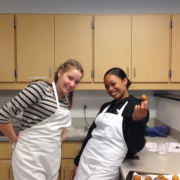Post-Pandemic Vigilance
How Classroom Teachers Can Know when Students are Harming Themselves . . . and What Teachers Should Do If They Are
How are students adjusting as they return to live classrooms? The answer is, they are adjusting in different ways, depending on thousands of variables that include life at home and their emotional and social maturity. Some students are simply happy to be back at their desks. Still, others are finding the transition moderately difficult. And then there are other students who are having an extremely difficult time making the transition.
Some of the students in that third group may even engage in self-harming behaviors, including cutting themselves or other destructive patterns. Why do some students fall into these behaviors? And if they do, how can a teacher know?
Let’s explore some of the answers to those questions that are provided by Venée M. Hummel in an article, “Understanding Self-Harming Behaviors and Students: The Basics for Teachers,” she wrote for the Clarity Child Guidance Center blog. Ms. Hummel, LCSW, is a clinical social worker and clinician at the Steven A. Cohen Military Family Clinic at Centerstone in Clarksville, Tennessee, and an instructor at the Garland School of Social Work at Baylor University.
Why Students Harm Themselves
Ms. Hummel writes that intentionally hurting oneself is a coping mechanism that serves a variety of functions, including:
- Creating physical pain as a way to feel something when experiencing numbness
- Distracting from emotions
- Enacting a form of control when feeling out of control
- Engaging in self-harm as punishment
Signs that Teachers Can Watch to Identify Students who Are Harming Themselves
Ms. Hummel lists these warning signs:
- Exhibiting emotional instability and mood swings
- Experiencing difficulty in relationships
- Explaining away frequent injuries as accidents
- Picking, rubbing (to create a skin burn, such as with an eraser), or scratching at themselves
- Visible scarring, bruises, burns, and other wounds
- Wearing long-sleeved shirts or long pants, even in hot temperatures or under typical physical education uniforms
- Withdrawing and isolating
Your Students Are Invited to Explore Their College & Career Options with Us . . .
Students who participate in the National Career & College Pathway Study will gain new insights about making educational decisions that align with their interests, passions, and aptitudes. Participants will receive information on college and career opportunities that match their interests.

Resources
Career and College Planning Lesson Plan
Request study materials for your classroom
Related Posts
How to Recognize and Combat College Burnout
How to Build a More Resilient Classroom While Covid Isn’t Going Away
What Kind of Support Do Teachers Need the Most During the Pandemic?
Teachers’ Commitment to their Students Was their Strongest Motivation During the Pandemic
Turning Covid into Teachable Moments










Leave a Reply
Want to join the discussion?Feel free to contribute!